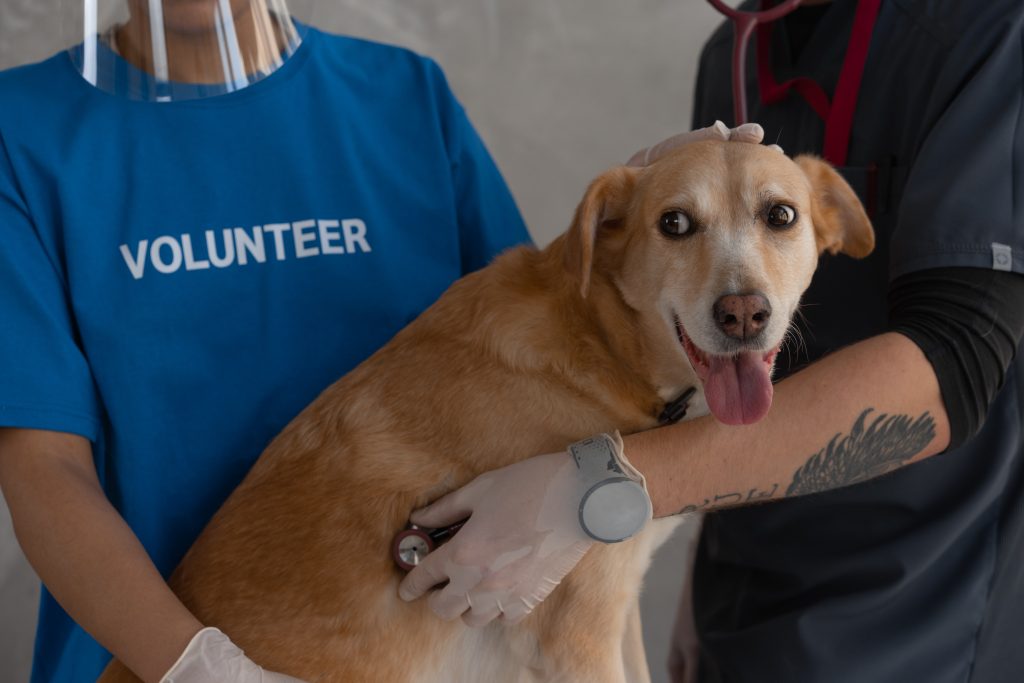
Posts by:
Dr. Nancy Kay, DVM, DACVIM
Dog Checkups & Preventive Care
Have you ever gone to the doctor and realized after the visit that those healing hands never actually touched your body? C’mon now, that’s not okay!
When it comes to examining your dog, a hands-on examination from your veterinarian should be performed every time. In veterinary school, we are taught to perform a thorough physical examination on each and every patient. It would truly be a shame to miss a new heart murmur or enlarged lymph node simply because the chief complaint was an ear infection. It pays to perform a thorough exam during every office visit because the sooner abnormalities are detected, the more likely you and your veterinarian will be able to gain the upper hand.
The components of a thorough physical examination
Listed below are the components of a complete and thorough physical examination of your dog. The list may look long, but truthfully no more than a minute or two is required for a seasoned veterinarian to competently complete everything:
1. Assessment of overall alertness and appearance: Does the dog appear bright, alert and responsive?
2. Evaluation of gait: Is there any stiffness, lameness, swelling or asymmetry?
3. Evaluation of the skin and hair coat: Are there any areas of hair loss or inflammation? Is the coat lustrous and thrifty in appearance?
4. Assessment of body condition score (BCS): On a scale of 1-9, a number is assigned that indicates whether the dog is underweight, overweight or just right. A score of 5 indicates an ideal body weight. Numbers 1 through 4 represent gradations of being too thin, and 6 through 9 are gradations of being too heavy.
5.Measurement of the dog’s:
- Body weight: in pounds or kilograms
- Body temperature: The normal range is 100-102 degrees Fahrenheit
- Heart rate: The normal range is 60-120 beats per minute, depending on the size and athletic condition of the dog. The larger the dog, the lower the heart rate; the better athletic condition, the lower the heart rate.
- Respiratory rate: The normal rate is 10-25 breaths per minute
- Capillary refill time: This is the number of seconds it takes for the gum line to become pink after it has been blanched by finger pressure. Normal capillary refill time is 1-1.5 seconds.
6. Examination of the eyes, ears, nose, and oral cavity: Are there any abnormalities present? Only rarely can the throat be evaluated. This is because most dogs are not trained to stick out their tongue and say, “Ahhh.” Ideally, examination of the eyes involves an ophthalmoscope and examination of the ears involves an otoscope. Both of these instruments provide a more thorough inspection.
7. Palpation of lymph nodes: Are any enlarged or painful?
8. Listening to the heart and lungs with a stethoscope (auscultation): Are there unusual breath sounds, a heart murmur, or a heart rhythm abnormality? Auscultation is performed on both sides of the chest.
9. Palpation of the abdomen: Are there areas of discomfort or palpable abnormalities?
10. Rectal examination (specific for dogs that are middle aged and older): Are there any growths present within or around the rectum? Is the prostate gland enlarged or painful? Is the stool normal?
The order of events during a veterinary examination
Veterinarians perform physicals differently in terms of the order in which body parts are examined. This doesn’t matter in the least as long as everything is included. Please remember, such thorough exams are not reserved only for the annual office visit. They should be performed at each and every visit.
How can you help during a veterinary examination?
It helps if you are quiet during the course of your dog’s physical examination, particularly when the stethoscope is in use! Conversing during this exam has the potential to interrupt your veterinarian’s concentration and may interfere with his or her thoroughness. Save your questions and comments for discussion following your dog’s examination.
Questions to ask your veterinarian
- Should I be examining my dog at home on a regular basis?
- If so, what exactly should I be looking for?
- Based on your exam, do you think my dog is overweight, underweight or just right?
- Did you find any abnormalities on my dog’s examination? If so, what are they?







